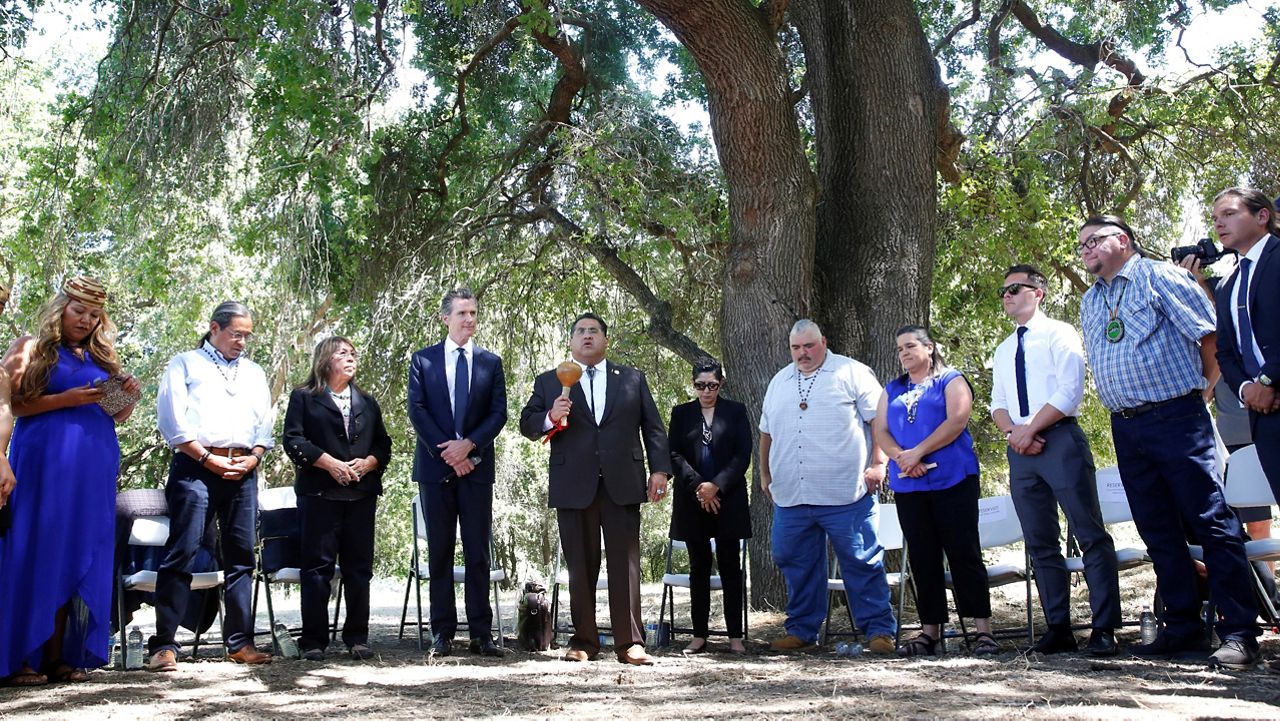SACRAMENTO, Calif. (AP) — California Gov. Gavin Newsom on Friday proposed giving Native American tribes $100 million so they can purchase and preserve their ancestral lands.
What You Need To Know
- The proposal is part of his pledge to make sure nearly one-third of California's land and coastal waters are preserved by 2030
- Newsom said tribal leaders should have a say in what lands get preserved
- The money is one piece of Newsom's $286.4 billion budget proposal
- The state Legislature would have to approve the spending before it could happen
The proposal is part of his pledge to make sure nearly one-third of California’s land and coastal waters are preserved by 2030. But rather than have the government do all of that, Newsom said tribal leaders should have a say in what lands get preserved.
“We know that California Native peoples have always had an interdependent relation with land, waters, everything that makes up the state of California,” Newsom said. “Unfortunately, we also know that the state has had a role in violently disrupting those relations.”
The money is one piece of Newsom’s $286.4 billion budget proposal. The state Legislature would have to approve the spending before it could happen.
The funding would not function like a traditional state grant program, where the state decides who gets the money and how they can spend it. Instead, California Natural Resources Secretary Wade Crowfoot said the administration is “committed to developing a structure or a process where tribes are deciding where these funds are going.”
“There’s so much that we need to learn, obviously, from the tribal communities about how to do this,” Crowfoot said. “We’ve disconnected ourselves from all the tribal ecological knowledge that we need to heal and care for the lands.”
The proposal comes amid a growing Land Back movement to return Native American homelands to the descendants of those who lived there for millennia before European settlers arrived.
Aside from buying land, tribes in California could also use the money for programs that address climate change and workforce development.
Crowfoot spoke during a meeting of the California Truth & Healing Council, established by Newsom in 2019 to “clarify the record” of the “troubled relationship between tribes and the state.”
Tribal leaders were enthusiastic about Newsom’s proposal, but worried how it would work in practice. In some cases, tribes have competing claims over the same land. Deciding who will get the money to purchase that land would be difficult.
Kouslaa Kessler-Mata, a member of the Truth & Healing Council, said the state needed to have a policy in place to resolve those conflicts “so that we don’t just wake up one day and say, ‘Oh, guess what? Right now, that land that you thought was in your ancestral territory is now being acquired by someone else.”
Caleem Sisk, chief of the Winnemem Wintu Tribe, noted some tribes — like hers — are not recognized by the federal government and have few resources of other tribes that are federally recognized.
“We're not in any position to really compete with them for a grant,” she said.
Crowfoot said he did not have a “quick and easy answer” to some of the council's concerns. He said ultimately the state will need “some sort of consultative body to help us shape this funding to be able to work through that.”
Newsom signed an executive order in 2020 directing that 30% of California's land and coastal waters be preserved by 2030. He has called that goal a "mandate," saying it is important for California to reduce the effects of climate change.
Crowfoot echoed that sentiment Friday, saying preserving land would allow more plants and soil to “actually absorb that pollution from the atmosphere and store it in the land.”
“Nature is needed in this effort to combat climate change,” he said.



